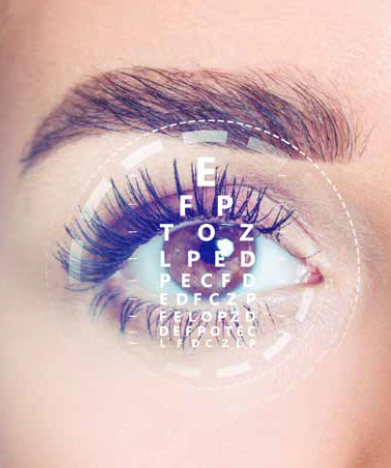SMILE for Hyperopia and Hyperopic Astigmatism
Positive results in study indicate current technique overcomes past challenges. Cheryl Guttman Krader reports.

Cheryl Guttman Krader
Published: Thursday, December 1, 2022
Results from a 12-month multicentre study investigating SMILE for spherocylindrical hyperopia suggest it is a safe, effective, and predictable procedure that appears to be associated with marginally better refractive results and less regression compared to hyperopic Femto-LASIK.
“We have been working on SMILE for hyperopia since 2010, and now, in my opinion, it is one of the biggest breakthroughs in laser refractive surgery since SMILE was introduced,” said Dr Walter Sekundo MD, PhD.
“We need a faster laser for the procedure. As performed with the VisuMax femtosecond laser in this study, the treatment takes 32 seconds. Once approved, however, the treatment will be done with the new VisuMax 800 laser, and then it will only take about 12 seconds.”
The multicentre study was conducted to obtain CE approval for the procedure. It involved eight centres in Europe, China, and India and included 374 eyes of 199 patients. The procedure used a 6.3 mm optical zone, 2.0 mm transition zone, and lenticule thickness of 25 μm centrally and 10 μm at the edge. Mean attempted hyperopic sphere was +2.76 D (maximum +6.00 D), mean attempted refractive cylinder was +0.88 D (maximum +4.75 D), and mean attempted spherical equivalent refraction (SEQ) was +3.20 (maximum +6.50 D).
Safety results showed the safety index was low on postoperative day one but steadily increased to about 1.0 at month 12. No eyes lost more than two lines of BCVA, 1.2% of eyes lost two lines, 11% lost one line, and 10% gained one line. Loss of contrast sensitivity was seen only at 12 and 18 cycles per degree.
Visual acuity outcomes analysed for the subgroup of 219 eyes treated with a plano target showed 68% achieved 20/20 UCVA at 12 months, and 88% saw 20/25 uncorrected.
“Remember that these hyperopes are often older patients who already have some degree of presbyopia. Two-thirds of my patients were treated with mini-monovision,” Dr Sekundo said.
Refractive results showed good predictability. At 12 months, SEQ was within 0.5 D of attempted in 81% of eyes and ±1.0 D in 93%.
“I think it is important to note the undercorrection was predominantly in eyes treated for greater than +3.0 D SEQ, and the only adjustment to the nomogram was from an earlier study of hyperopic femtosecond lenticule extraction. There is room for improvement in the accuracy of the procedure, but I think it can be achieved with further nomogram adjustments,” Dr Sekundo said, adding astigmatism correction was also very satisfactory.
He described the refractive stability as excellent, although he noted a change in SEQ of 0.07 D between 9 and 12 months.
“It is necessary to overcorrect initially when treating for hyperopia because epithelial healing leads to some regression. Most studies follow patients for only 9 months. In our study, there was very little change in refraction beyond 9 months, but we need to look further to see if it is related to late epithelial healing or presbyopia progression,” Dr Sekundo said.
He acknowledged visual recovery after SMILE was slower than Femto-LASIK for hyperopia and hyperopic astigmatism. However, he said it is a trade-off worth taking, considering SMILE seemed to have an advantage of less regression and less postoperative neurotrophic keratopathy/dry eye symptoms.
Dr Sekundo also reported the procedure was associated with a higher incidence of visible haze compared to myopic SMILE.
“The haze was transient, but it is an issue that is being looked at more closely,” he said.
Dr Sekundo presented at the 40th Congress of the ESCRS in Milan.
Walter Sekundo MD, PhD, Professor and Chairman, Department of Ophthalmology, Phillips University of Marburg, Germany. sekundo@med.uni-marburg.de

Tags: SMILE, Astigmatism
Latest Articles
Towards a Unified IOL Classification
The new IOL functional classification needs a strong and unified effort from surgeons, societies, and industry.
Organising for Success
Professional and personal goals drive practice ownership and operational choices.
Update on Astigmatism Analysis
Is Frugal Innovation Possible in Ophthalmology?
Improving access through financially and environmentally sustainable innovation.
iNovation Innovators Den Boosts Eye Care Pioneers
New ideas and industry, colleague, and funding contacts among the benefits.
José Güell: Trends in Cornea Treatment
Endothelial damage, cellular treatments, human tissue, and infections are key concerns on the horizon.
Making IOLs a More Personal Choice
Surgeons may prefer some IOLs for their patients, but what about for themselves?
Need to Know: Higher-Order Aberrations and Polynomials
This first instalment in a tutorial series will discuss more on the measurement and clinical implications of HOAs.
Never Go In Blind
Novel ophthalmic block simulator promises higher rates of confidence and competence in trainees.